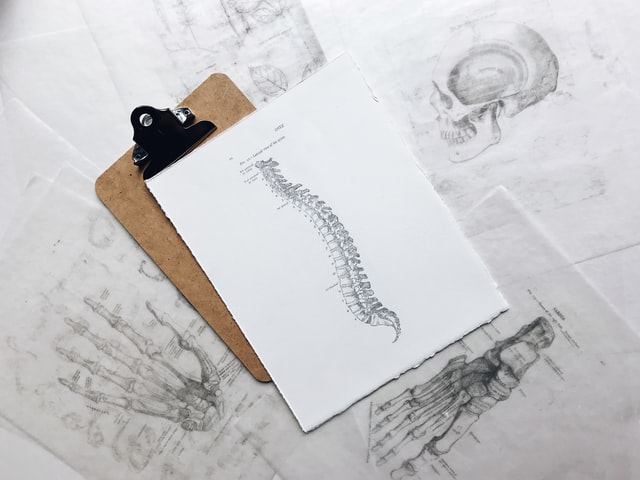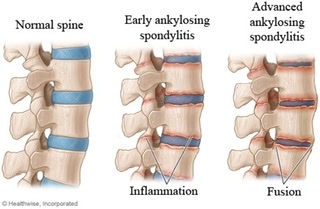Ankylosing Spondylitis

Ankylosing spondylitis is a chronic inflammatory condition that primarily affects the spine and sacroiliac joints. “Ankylos” meaning stiffening of a joint, and “spondylo” meaning vertebra. Long term inflammation can slowly progress to bony ankylosis of the joints and spinal column which may result in fused vertebrae and increased rigidity of the spine.

1 in 200 of the adult population in the UK has AS but there is a huge delay in diagnosing patients - currently it takes an average of 8.5 years from when symptoms start to receiving a diagnosis. It is very important for us as allied heath care professionals to recognise the early signs and symptoms of AS and refer patients for the appropriate testing, as early intervention can provide better outcomes for managing the condition long term.
Features of AS:
- Heel pain
- Finger/hand inflammation and/or pain
- Recurrent eye infections
- Psoriasis & other inflammatory skin conditions
- Symptoms of IBS or other digestive issues
- Family history of inflammatory conditions
- Good response to non-steroidal anti-inflammatory drugs
- Onset of pain under 40 years of age; average age of onset is 24 and in 80% of cases, symptoms appear before 30 years of age
- More common in men than women
- On blood analysis, there might be elevated CRP, ESR and positive HLA-B27 gene
- Sometimes there are visible bony changes that are visible on X-rays but where X-ray changes are not present, inflammation may be seen on an MRI
Patient Symptoms to be aware of:
- Slow or gradual onset of back pain & stiffness over weeks or months, rather than hours or days
- Early morning stiffness and pain, wearing off or reducing throughout the day with exercise
- Persistent back pain for more than 3 months
- Feeling better after exercise and worse for rest
- Weight loss, especially in the early stages
- Fatigue or tiredness
- Feeling feverish and experiencing night sweats
So what can we do to help you?
As osteopaths, we are trained to identify early signs and symptoms of AS and your practitioner could refer you for the appropriate testing. If there is a positive diagnosis, we can guide you to all the most useful resources and tools to help manage the condition, as well as offer hands on treatment and exercises. Osteopathic treatment of AS patients aims to reduce pain, improve and maintain function of the musculoskeletal system, and improve how the rest of the body is functioning to reduce the strain on the spine. We can also give you stretching and strengthening exercises to maintain mobility, balance exercises to reduce risk of falls in patients with bony changes, provide advice on ergonomics at work and general posture, and breathing and relaxation techniques.
The National Axial Spondyloarthritis Society is the only charity in the UK dedicated to transforming axial SpA (AS) care in the UK. Find out more about what axial SpA (AS) is, and why our work is so important here: https://nass.co.uk/

